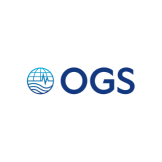BluEcho
From science to policy: assessing impacts and developing solutions for ship traffic and offshore wind farms through detailed soundmaps
Key facts
Status: ongoing
Duration:
1 May 2024 - 30 Apr 2027
Theme:
Managing sea uses
Contact
Description
Owing to the synergy among research institutions from Italy, Germany, Sweden, and Norway, BluEcho aims to improve the sustainability of the shipping and wind farm industries and conserve species biodiversity by assessing noise impacts on marine fauna and evaluating the efficiency of various acoustic mitigation measures to reduce noise levels.
Our comprehensive approach will adopt a combination of numerical simulations, fieldwork, and desktop studies to provide critical data for the design of low-noise Marine Protected Areas implemented in the Mediterranean Sea, the North Sea, the Baltic Sea, the Norwegian Sea, and the Polar Oceans. Data from the more pristine polar regions will serve as a benchmark for comparison with areas with high shipping traffic recorded in the other sea basins. Sound produced by wind turbines and ship propellers will be reproduced in detail with cutting-edge numerical techniques and will serve as input for producing detailed sound maps. In particular, the Hywind Tampen wind farm case study in the Norwegian Sea will serve as a starting point to develop similar sustainable technologies in other sea basins. Model validation, resulting from the joint effort of the partners, will lead to fine-tuning and optimization processes for the numerical tools.
The numerical modeling will generate accurate three-dimensional sound maps resulting from existing models and in-house codes that will provide useful information on the effective noise-generation mechanisms. The maps will guide the process of identification of mitigation measures of noise emission.
Noise reduction measures already taken into consideration by various ship-building firms will be evaluated for their effectiveness with a science-based approach. Underwater noise impacts will be assessed on selected marine taxa tailored to each sea basin.
The joint effort among the partners will contribute to implementing a coordinated international approach to effectively manage underwater noise pollution.
The project will deliver an economic analysis of costs and benefits coupled with a marine spatial planning analysis. Given the difficulty to reliably monetize benefits, a cost effectiveness analysis is suggested to find the best balance between noise reduction and economic cost minimization. Starting from the list of measures that can be adopted to reduce noise, we will analyze their cost components: investment and variable cost.
The project's results will use marine data from Copernicus Marine service and EMODnet and will be broadly available and accessible to decision-making bodies and represent a benchmark for the relevant stakeholders.
Long term impacts of BluEcho will be: 1) the contribution to the development of new decision-support tools; 2) the promotion and integration of initiatives and support to interconnectivity of policies among regional sea basins; 3) the enhanced cooperation, co-design, and activity alignment with stakeholders beyond academia.






